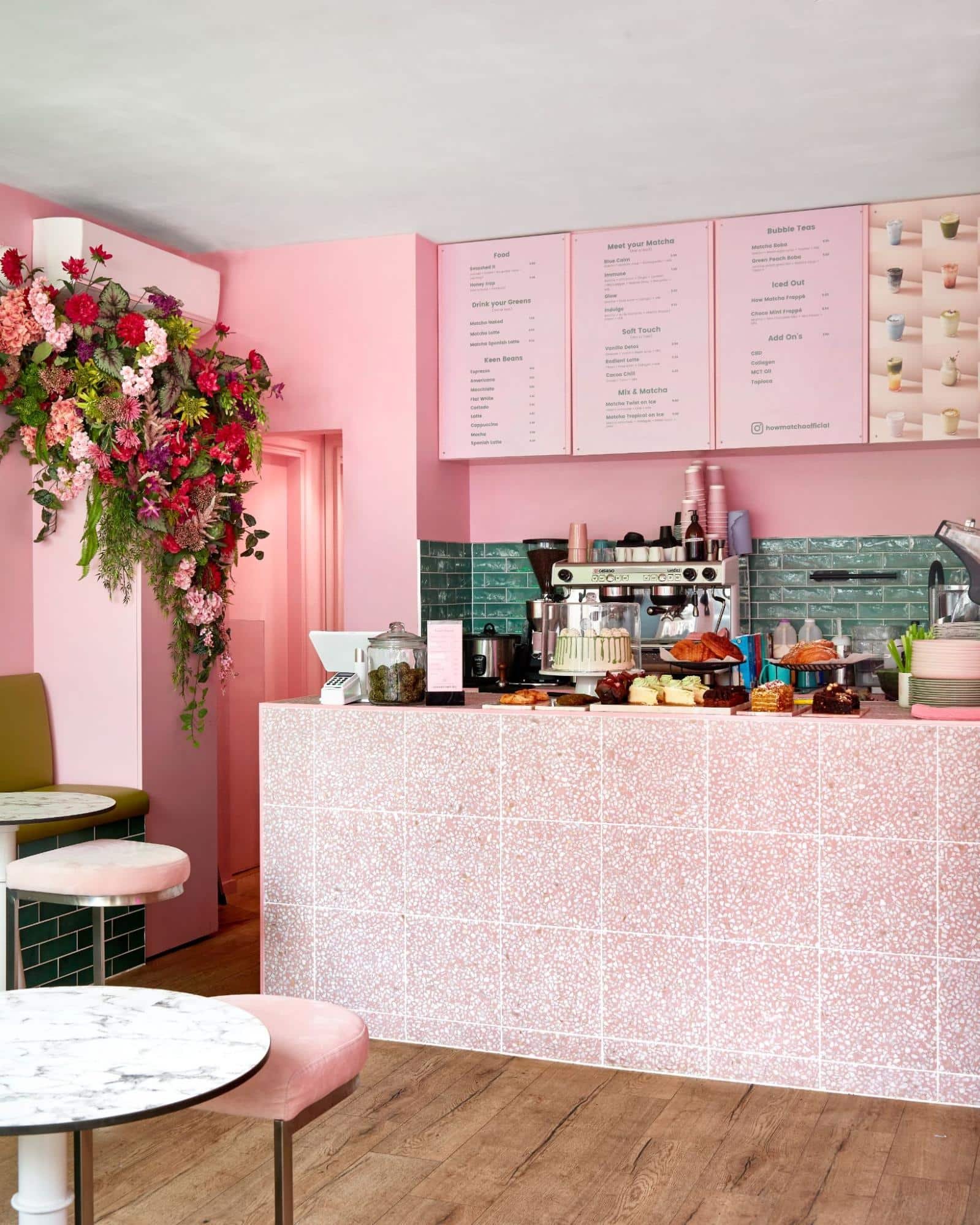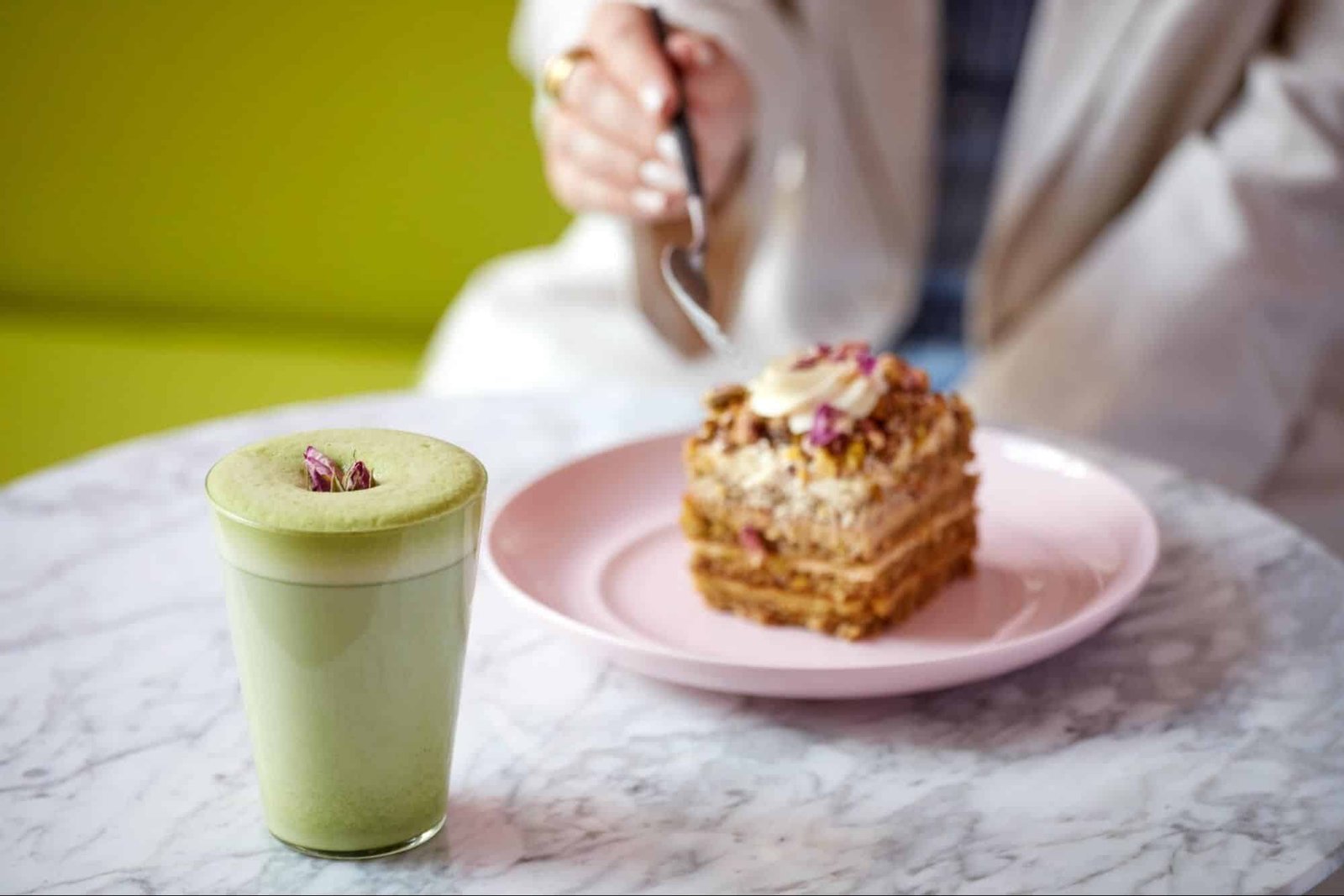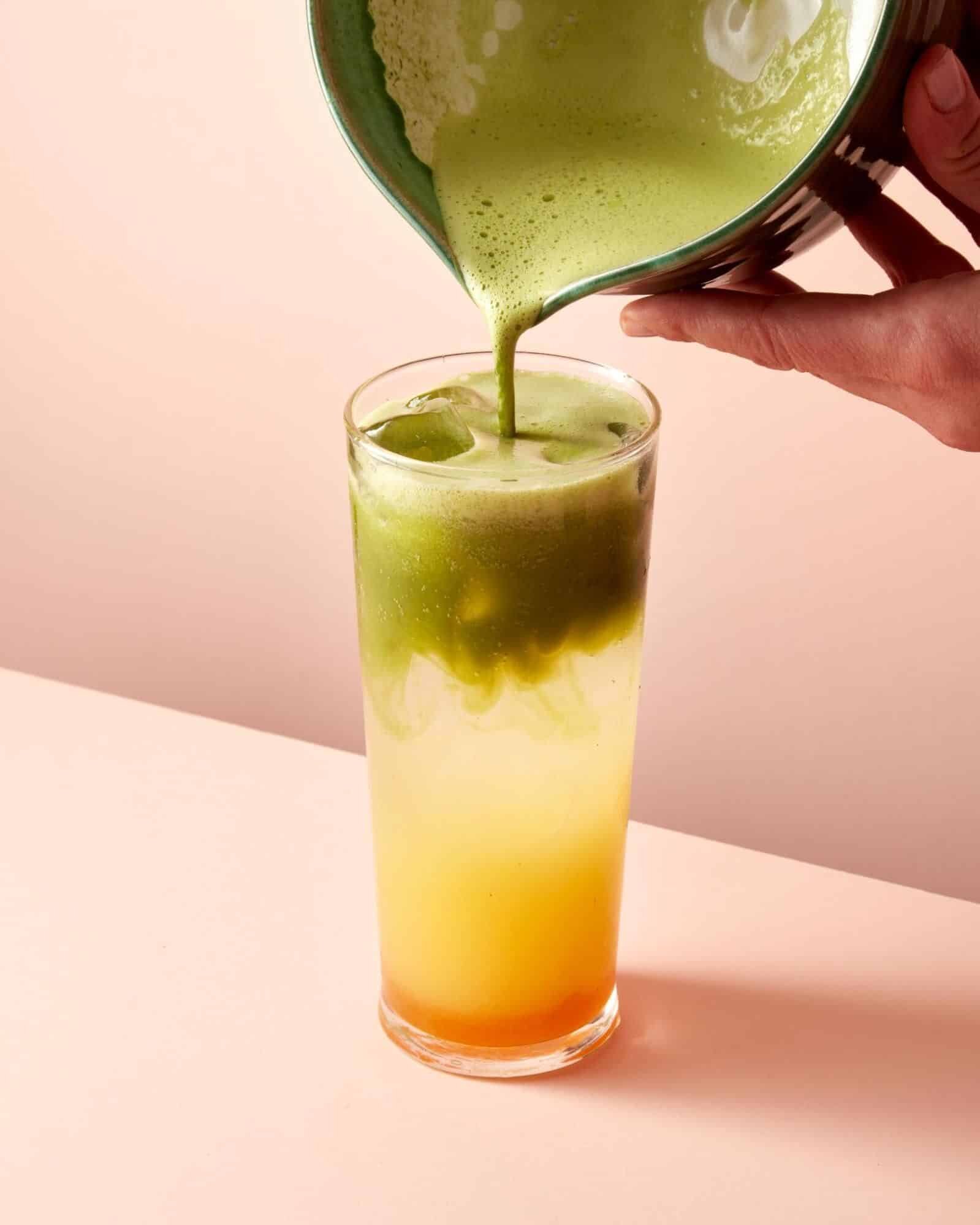Building A Matcha Tea Shop Case Study
Nestled in the heart of Marylebone, a unique transformation was underway. This is the story of “How Matcha,” a vibrant project helmed by two enterprising souls – Deepak from the UK and Axel from sunny Southern France.
Unlike the typical startup, this venture involved a takeover, a revamp, and a lot of passion. At the outset, Deepak was already busy building the Pearl Lemon Café, a haven for coffee lovers and outdoor enthusiasts alike. His daily ritual involved seeking out new cafes, ordering his favourite brew, and setting up shop with his trusty laptop.
The acquisition of “How Matcha” was more than a business decision; it was a reflection of Deepak’s passion for creating spaces and offerings that align with a healthy, active lifestyle. His prior success with “Plant Sumo,” a vegan food subscription service, demonstrated his commitment to promoting healthier food choices, making integrating a matcha-centric menu a synergistic expansion for his business ventures.
Matcha, known for its health benefits and unique flavour profile, was rapidly gaining popularity across the UK. Recognizing this trend, Deepak saw the potential for “How Matcha” to tap into the growing demand for wellness-oriented beverages, particularly in a market where consumers were increasingly seeking options that supported their health-conscious lifestyles.
Armed with the knowledge gleaned from successful restaurant marketing strategies, Deepak was well-prepared to promote “How Matcha” effectively. He understood that the rising interest in matcha wasn’t just a temporary trend but a lasting movement that could significantly impact the food and beverage industry, regardless of external factors like the pandemic.
By seizing this opportunity, Deepak expanded his entrepreneurial portfolio and strengthened his mission to contribute positively to people’s health and well-being through innovative and appealing food and drink options. The launch of “How Matcha” promised to offer consumers a delicious way to integrate the health benefits of matcha into their daily routines, thereby supporting a healthier lifestyle through a simple, enjoyable habit.
“How Matcha” seamlessly fit into this narrative. It wasn’t just a café; it was a haven for matcha enthusiasts. Located strategically in an area teeming with business potential, it was a year-old establishment that had already proven itself. Deepak recognized its untapped potential and was determined to elevate it even further.
The Initial Purchase
The acquisition of “How Matcha” presented itself almost serendipitously. The cafe’s previous owner, finding that the demands of cafe management and the nuances of effective marketing were pulling him away from personal commitments, decided to step down. Recognizing that the business needed a revitalized approach, he saw in Deepak not just a buyer, but a successor who could breathe new life into the establishment.
Upon taking over, Deepak was immediately faced with many challenges that needed urgent attention to turn the cafe around. The marketing efforts were notably lacking, both in visibility and engagement. This was crucial because effective marketing is essential in the highly competitive cafe industry to draw in and retain customers.
The cafe’s presence on delivery platforms, a key revenue stream especially in shifting consumer preferences towards online ordering, was poorly managed and underutilized. Restoring this was a priority, as it would increase sales and enhance the cafe’s accessibility to a wider customer base.
Additionally, supplier relationships had been neglected, leading to issues with the consistency and quality of the ingredients—a critical aspect for a cafe specializing in matcha, where the quality of the matcha itself is paramount. Rebuilding these relationships was essential to ensuring the quality of the offerings and the reliability of the supply chain.
Operational challenges also needed significant restructuring. From streamlining processes to training staff and optimizing the menu to meet customer expectations better, each aspect required a detailed review and strategic overhaul.
Deepak’s approach was comprehensive, leveraging his expertise from running successful ventures like Plant Sumo. He planned to integrate similar health-focused and innovative strategies into “How Matcha,” ensuring that the cafe recovered from its past mismanagement and thrived under his leadership. The goal was clear: transforming “How Matcha” into a renowned destination for health-conscious consumers looking for premium, delicious, and beneficial matcha drinks.

Instead of immediate changes, Deepak conducted a comprehensive review of the transition. He closely engaged with the staff, strengthened supplier ties, and ensured a smooth handover of responsibilities with landlords. He ventured into the community, connecting with potential customers and gathering insights.
Recognising growth opportunities, he adopted a unique approach. He explored local gyms, hotels, neighbouring businesses, and residences, actively promoting the new and improved “How Matcha.” And with the help of the Pearl Lemon team, the cafe’s online presence was also boosted in no time.
The Scope of Work
With a budget of £57,000, the How Matcha project had to be executed perfectly, ensuring every aspect of the acquisition and revamp aligned with Deepak’s vision for the establishment. This cost would include necessary expenses and investments – from purchasing the cafe itself to acquiring necessary equipment, supplies, and ensuring a smooth transition of agreements and contracts.
The budget was allocated to about ⅛ of marketing and improving their reputation since online reviews about the quality of the product were also a concern. Deepak understood the significance of positive customer experiences in shaping the success of How Matcha. Investing in strategic marketing campaigns and initiatives allowed him to build a loyal customer base eager to explore the delights of matcha.
Half of the budget was spent on replacing and fixing the interior of the building, upgrading the furniture, and procuring necessary large equipment.
Another ⅛ of the budget was allocated to sampling and sourcing new suppliers to replace any that may have fallen short of the desired standards. Deepak’s commitment to quality and excellence led him to explore alternative options, seeking partners who shared his passion for superior ingredients and ethical practices.
The remaining fraction would be spent to cover any legal fees and filing expenses during the process to change over contracts and licences into the new ownership’s name.
By diligently allocating the budget across various critical aspects of the project, Deepak ensured that every pound was used wisely to maximise How Matcha’s potential. The careful planning and strategic distribution of funds allowed for a comprehensive transformation to position the cafe for sustained growth in the competitive matcha market.
The fundamental idea of all these changes is that they reflect the Pearl Lemon company ethos.
Young, vibrant, energetic and full of life.
How Matcha already embodied this with its bright pink and green decor, so it was already a step in the right direction.
This project included the following:
- Negotiating rental price
- Getting the team their level 3 and level 2 food safety & hygiene certifications (we weren’t sure who had what in terms of existing staff)
- Taking over agreements we could
- Getting insurance
- Getting various licences and relationships built (waste, internet, etc.)
- Setting up supplier relationships
- Placing initial orders
- Equipment research and ordering
- Finding contractors to paint and make small repairs
- Getting pavement licences (the table and chairs licence was a part of this)
- Getting alcohol licences
- Marketing
- Delivery platform set-up (we had to get the accounts signed over to us, banks changed, and then some platforms made us do a full re-do)
- And more…
Budget & Costing
Surprisingly enough, while this took the most time on our previous projects, costing was the fastest part of the How Matcha build.
The previous owner shared existing relationships and contracts. However, Lydia and Axel took a virtual deep dive into the details. Their objective was to assess whether it would be more advantageous to stick with the current suppliers or forge new partnerships with suppliers already associated with Pearl Lemon Cafe.
Coffee was one of those things- changing this provider made it easily over 50 GBP cheaper per order.

The Design
Taking over “How Matcha,” we were presented with an already established pink and green design theme that was visually appealing and held potential for further enhancement. We decided to embrace and elevate this existing aesthetic to create an even more inviting and Instagram-worthy space.
To complement the outdoor ambiance, we sourced stylish green chairs to pair with the tables, enhancing the cafe’s external appeal and making it a more attractive spot for passersby and customers looking to enjoy their beverages outdoors. Inside, we invested in vibrant neon signage, not only to brighten the interior but also to provide perfect photo opportunities for visitors, further promoting our cafe through visual shares on social media.
A fresh coat of paint was applied throughout the premises to revitalize the space with a cleaner, fresher look. This not only refreshed the physical environment but also symbolized a new beginning under new management.
Recognizing the importance of maintaining high standards, we replaced the upholstery on all furniture to ensure comfort, style, and cleanliness. Additionally, we implemented rigorous new cleaning protocols with the existing team. The standards previously in place did not meet our expectations, and we were committed to elevating every aspect of the cafe’s operation.
Embracing the theme, we went “full steam ahead” with the color pink, incorporating it into various elements within the cafe. From pink signage to soap dispensers and tip jars, we ensured that this vibrant color touched every corner, creating a cohesive and visually appealing environment.
These enhancements were part of a broader strategy to not just maintain but significantly improve the cafe’s appeal, aiming to create a space that was not only aesthetically pleasing but also met high standards of quality and cleanliness. This approach was intended to attract a broader clientele and foster a sense of pride and ownership among the staff, contributing to a positive atmosphere and a superior customer experience.
Product Testing
We wanted the best matcha we could find for the cafe. To elevate the cafe, we spent a week reviewing different types of matcha, organising samples to be sent to us, and attending matcha events.
Upon taking over the cafe, we were confronted with several 1-star reviews that lamented the poor quality of the matcha previously served. Determined to turn the tide and restore the cafe’s reputation, we HAD to change the matcha.
After all the samples and testing, we found a supplier from Japan that got us Super Ceremonial Grade Matcha.
This is considered some of the best, with a vibrant natural green, no bitterness, and no need for added sweetener. It was such a huge success we also ordered it in tins for people to buy in-store or online.

Designing the Menu
Designing our menu was one of the most immersive parts of the setup.
We wanted something classic and familiar but with a few unique offerings that would set us apart. We relied heavily upon Axel’s experience, being from Southern France. He specialised in taking his experience and looking at what was missing from the local market to make us stand apart and above the crowd.
Menu design also looked at local produce and shops to push affordability, sustainability, and local support. We found an amazing local matcha bakery that got us cookies, crepe cakes, chocolates, and more (all with matcha heavily featured).
Once we were set with those, we had to brainstorm for drinks. First things first was our coffee drinks. We wanted to include all the classics (latte, cappuccino, hot chocolates, espresso, Americano, etc.).
But this is a matcha cafe. So, we spent a full week designing and developing a matcha-based menu with our team and our supplier. We developed over 15 unique matcha drinks and other caffeine-free options to give life to the cafe.
A peek at some of our items is as follows:



Business Progress
First, while our Procurement Director was sourcing items for the cafe INSIDE, we got contractors to start on the design.
Because the previous owner got a headstart on this, we then just took over contracts and relationships and picked up where they left off. Some of the biggest changes involved were fresh paint, new furniture, new cleaning procedures, and ensuring new rules were followed.
Meanwhile, back on the operations side of the setup, we were hiring and buying supplies.
Hiring and Training
From a hiring standpoint, ads went out from HR, and they had to monitor and send people directly to Dee and Axel. We needed a skilled and bubbly team to greet and accommodate customers (bubbly was non-negotiable).
We had some struggles keeping people at first—some people with two jobs would not show up after a few days and not be interested in the job. We also had some of the original team stay for a while, but as we became strict on the cleaning guidelines and locked up at the end of the day, they eventually also left.
Eventually, we were challenged to train people 100% from scratch. We needed our team to attend external training events so they could learn more about the industry. We built an online training course, a training packet, and more learning resources for the team.
The main hook was that this all had to be matcha-focused, so we ended up with five massive PDF documents containing recipes, procedures, instructions, and allergen statements.
We created online courses on how to open/close, manage the shop, provide proper customer service, and more. Other supporting documents were paired with video training, recipes, and ingredient cards to help the staff if they had questions.
In the end, we built the dream team.
In lieu of our new team being as functional as ever, we needed to change our Point of Sales Systems, too. Initially, the previous owner left us with a Zelle system, but we opted to switch to Square to manage all 3 locations from one palace. This also simplified our accounting system, as we now had one less system to get information from.
Their platform is secure, easy to use, great for personalisation, and had reasonably priced equipment bundles we needed.
The Legal Stuff
Legal “stuff” was a long, detailed process. It was mission-critical not to miss anything to avoid delays in our grand opening or risking the potential of being shut down.
The first was applying for a food licence. This meant:
- At least one person needed a level 3 food hygiene certification (this took 5 hours per person). We were lucky to have this person already at Pearl Lemon Cafe, so this was transferred to the new location.
- We needed to have public liability insurance (this meant hunting and getting quotes). We had a tough time with this as we also did catering on the side, so we needed close to 1 million in coverage for public liability due to serving food. We went back to the agent we already had and asked them to just add another location to the plan.
- We had to build a fire safety analysis (to prove we were safe). This was a surprisingly tough document to build, as we had to show everything was up to code and fully mapped out. An old floor plan was shared with us, but we had to redo it to meet the legal requirements.
- We had to build a HACCP (a 50-page document showing we can handle any issue or potential hazard, from mould to spoilage to fire or flood). This took close to a week to build, with a template guiding us. If there could be a contaminant, we had to list what it was, how it could happen, and how to prevent and handle the situation—from chemicals to glass to illness and everything in between. Luckily, we already had something similar from our other two shops.
- Prove we have a waste management contract. This was simple, and most of the time, we were only focused on finding the best price for the best service. We did end up keeping the existing contract for ease.
Other legal items that came next were registering our logo as a trademark so no one could pretend to be us, going through alcohol licence courses and tests (this one was another two-week process) and getting a premises licence to serve alcohol. The owner at least gladly signed over the rights to the trademark, so we owned it.
Delivery Platforms
Setting up How Matcha on delivery platforms was a key part of our marketing strategy. As a new business, we couldn’t solely rely on foot traffic to bring people in. This meant relying on delivery platforms to get us visibility online.
We then had to set up How Matcha on Deliveroo and UberEats.
How Matcha had the unique challenge of having an existing account. So, it took a few weeks for their support teams to sign over the existing accounts to us and change the bank information to our bank.
Once this was done, Lydia went to work.
Delivery platforms needed to be maintained so it was an ongoing project through year one. We experimented with ads and offers, changing descriptions and photos, and making bundle deals. We invested much time and energy into this portion of the project to gain as many new and recurring customers as possible.
Later on, we found out that there was a very particular formula for having the perfect restaurant listing on these platforms. We spent 80 hours per platform after going live, fine-tuning, and developing our “secret sauce”.
Descriptions must be written in a particular way, pricing has to be set just right, images factored in, reviews, and more. It was a true challenge.
Inventory and Stock Management
To give you a feel for what we had to purchase:
- Chairs
- Cleaning supplies
- Mop
- Square Terminal
- Tablet for square
- A-board for outside (we needed to get those views from the street)
- Sandwich press (because we needed a new one)
- And more…way more
Then there were the consumables:
- Startin with supplier relationships
- Milk suppliers
- Pastries
- Toasty supplies (mostly avocado toasts)
- To go supplies for sandwiches
- Juices
- Matcha
- Coffee
- Coffee Syrups
- And more
Once we established everything we needed and had. We built a purchasing spreadsheet to start while we honed in on who was best.
Choco swooped in to save the day. Ordering was made easier because it put everything in one place—no logins, no spreadsheets…no nonsense.
Prior to the app, Lydia and Axel worked in one giant shared sheet with a checkbox system. It seemed to be the best way to be cohesive with a 5-hour time gap. Lydia would include all information needed in the sheet, such as the product name, description, where it was for, where it was from, the cost, and the URL.
Axel would then check the sheet when things needed to be ordered, check off a little box and write in how many packs. Lydia would check the sheet at her EOD and order for the next day or within 48 hours.
But as we got busier and expanded, this became hard to manage, and other team members requesting items wouldn’t use the sheet. So Choco was a definite lifesaver for us.
The internal team was quick to establish a purchasing protocol with Lydia. After a few weeks of watching inventory, a rhythm was built so that when there was a week left of an item, Lydia would order it to be delivered in about 72 hours, and then there wouldn’t be excess stocks.
Marketing Efforts
Marketing cannot be forgotten in our cafe’s setup. We made offline and online efforts to ensure we hit the ground running.
Marketing campaigns began even before a physical location was found.
We built the website, social media accounts, and directory listings. Once those were done, we began SEO work to increase our visibility on Google and maintain an active online presence.
As soon as discussions of purchasing How Matcha began, we started to work on the above and below.
Parallel to our online efforts, we engaged in offline marketing initiatives to boost local visibility. We initiated a flyering campaign around Marylebone and strategically placed flyers in key locations frequented by our target demographic.
Additionally, we actively encouraged customers to write reviews and refer friends, offering incentives such as discounts for their participation. This resulted in an overwhelming response and an unprecedented demand for our loyalty program, where we had to order over 5,000 loyalty cards in year one.
We also had QR codes at the register to streamline the customer experience and incentivise engagement. Customers could easily scan these codes to avail themselves of exclusive discounts and leave reviews.
The health & fitness opportunity
Matcha is considered a superfood because it is packed with antioxidants. It is a great alternative to caffeinated drinks.
By offering an array of matcha-themed drinks or decaf matcha-free drinks, we were able to appeal to those trying to stay on the lighter side of the caffeine spectrum.
How Matcha is also in a vastly different space than Pearl Lemon Cafe, so it had to grab people’s attention on the go quickly. Healthy highlights were our A-board’s focus to pull people in.
The Product Opportunity
We found plenty of people who loved matcha and couldn’t get enough. They were into lattes, pastries, and boba but also wanted to take this love home and give it to others.
We will discuss the online sales aspect later, but having a matcha-themed cafe allowed us to take social media and Shopify by storm with unique user-generated content and provide customers with the opportunity to have How Matcha at home.
Ranking Locally
We greatly benefited from developing a local marketing matrix to outrank our competitors.
One of our strategies was having a beautiful A-board out on the sidewalk for people passing to see on and across the street should they not look up at our sign.
We extensively researched local businesses and schools and partnered with them for special events. We also launched ourselves on numerous loyalty platforms as well. Having virtual loyalty programs and physical cards allowed us to extend our reach well beyond what anyone else could.
Part of ranking locally was also getting in on associations and clubs because then our name ended up far and wide. Places like Glassdoor, Next Door, Yell, Yelp and more allowed us to gain an amazing level of visibility, and we quickly garnered a loyal following.
Local PR was also a huge part of this section of our launch since we wanted to be as visible as possible. We ended up being published in local newspapers and prints; we were also featured in numerous online publications.
The location also presented a lot of unique marketing opportunities as well. It has 3 hotels within 3 minutes walking distance:

It sits below a residential block:

The average income for this postcode is:

Next door to it is a laser clinic, nail salon and luxury clothing store

The adjacent street has several other eateries suggesting a strong local market:

The local ‘hip’ cafe supports £4+ pricing for Matcha drinks

And has a strong local business based on it’s Google reviews:

In the area – according to 192.com– there are 200 active businesses just in this postcode:

Of these businesses, there are 5+ gyms within a minute’s walking distance

All in all – this represents a significant local marketing opportunity for the business.
Reviews, Reviews, Reviews
Reviews are mission critical in any industry, but especially in the food and beverage space. Many sub-markets for restaurants are oversaturated. Everyone dreams of having a food cart, a cafe, or a bakery.
This means you have to be seen as the best of the best. The way to solve this problem is, of course, getting reviews. It’s a proven fact that people spend hours researching before visits, purchases, etc.
In relation to the previous section, we got listed on directories for local visibility when people looked for our competitors in London and Fulham. Then from here we started getting reviews.
We made purposeful efforts to get reviews on Facebook, Google My Business, Yell/Yelp, Trust Pilot, and more. We ended up with hundreds of 5-star reviews spread over multiple platforms.
Part of our online marketing efforts included more than just getting reviews. We also developed a specific strategy for engagement by replying to reviews. By taking this “industry secret” approach, we were able to help boost our ranking within local searches.

Shopify and E-commerce
Something unique we started to develop early on was our Shopify store. shop.pearllemoncafe.com was developed to sell our matcha and ship it to customers plus other retail items we sold in store.

There was more to this, though. We heavily involved our design team with Lydia on this project. So while she spent a week building the website and ensuring the checkout worked and was functional, the design team started working on various merchandise.
The selection included t-shirts, tote bags, and mugs. Each “section,” we decided, would have up to 10 different designs or slogans that would be repeated across all item types. This way, if someone really liked “So Little Time, So Matcha To Do,” they could get a mug, tote, and matching t-shirt to express their full support of all things matcha.
After a month of designing and a week of website building, the store was ready for orders and was added to our various sites to buy directly from.
We also enjoyed ordering samples and having a fun photo shoot documenting the project.

Main Challenges We Faced
Suppliers and equipment:
Most initial suppliers were surprisingly expensive to work with. We HAD to cut costs to allow this location to turn a profit. It took a solid week of calls and negotiating to ensure all aspects of the menu would be covered and cut costs by close to 40%.
Cleaning:
The team that came with the cafe was a bit subpar regarding cleaning. Once we got in, we found various equipment and furniture were never moved- thus, there was a build-up of crumbs, spills and sticky residues. Heavy training and cleaning were needed. Due to poor cleaning, we had a fly and ant problem that we had to take care of soon after ordering.
Reviews:
Deliveroo and Uber Eats had some great reviews of the existing shop. But Google was another story. It was riddled with 1-star reviews about poor service or matcha. This gave us a huge push to answer all reviews and change matcha suppliers to something better.
Internet:
The Internet remained a big issue for this location. For some reason, it liked to disconnect or go on the fritz. We had to try different providers as this would cause delivery tablets to disconnect, and we would lose out on sales.
The Outcome
How Matcha turned out to be both lovely to look at and successful. As the business became established, we have easily seen 13% minimum growth month after month. Growth was even higher month after month on Deliveroo.
How Matcha continues to grow and remain a profitable business. We look forward to the various catering events and businesses that the cafe brings in.
We would love to see more of our visitors and check out how often they tag us on their social media profiles. Our team looks forward to the joy the pink and green brings them.

